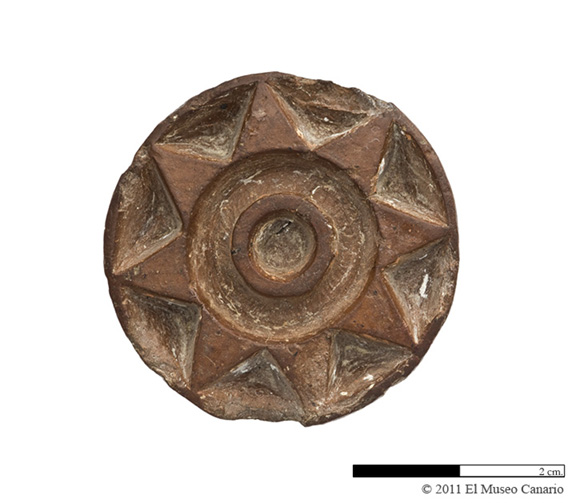Google Guanche+sun, sol+guanche, sol+canario+simbolo etc. etc. and you’re bound to see this symbol. Come to any souvenir shop in Canaries and you’ll see it there.
I am not sure that it is even a solar symbol, maybe it is a star. It is known though that Guanches worshipped a solar deity named Magec.
I couldn’t find much information about this symbol on the web; it looks like most common “Guanche” design is based on the pintadera no. 3080 in El Museo Canario [M.ª del Carmen Cruz de Mercadal, Teresa Delgado Darias, Javier Velasco Vázquez, Pintaderas de El Museo Canario; El Museo Canario, 2013].
This symbol is based on a regular octagram (Schläfli symbol {8/3}) and not on the Star of Lakshmi (Schläfli symbol {8/2}) and its variants, Rub el Hizb and al-Quds star. However, you can clearly see that the eight intersecting lines of the octagram form the Star of Lakshmi which is completely covered by a circle in the “Guanche sun”.
More photos related to Guanches, sun, stars, octagrams and sea glass @ Shutterstock.









